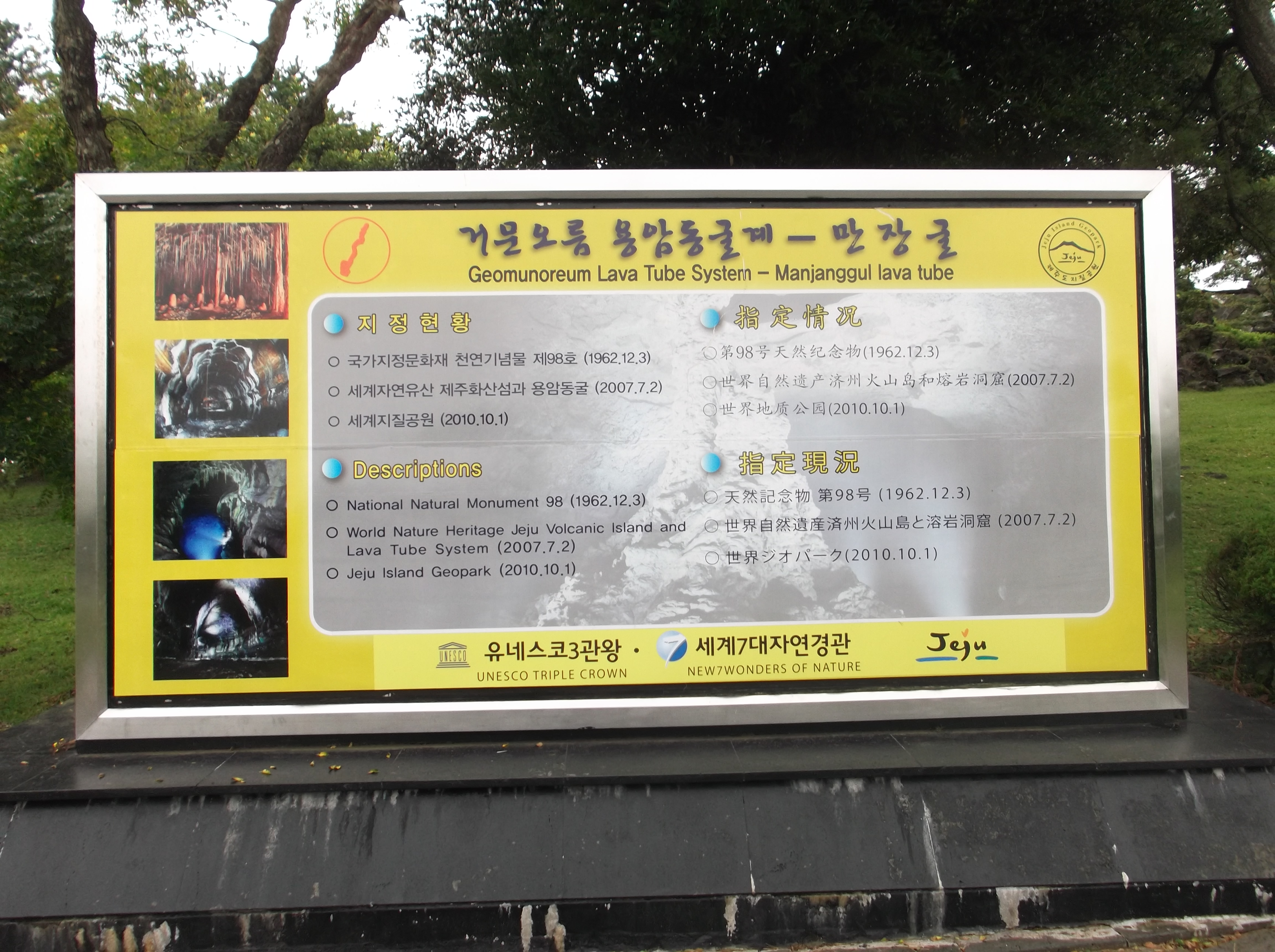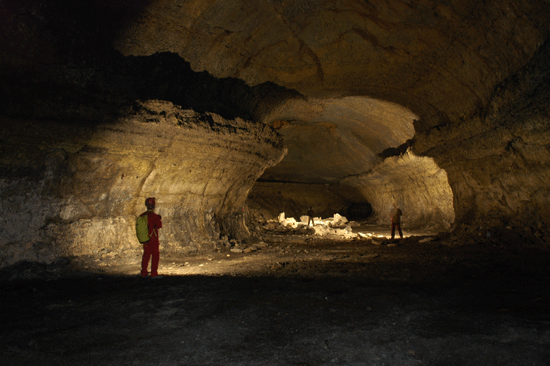On Thursday morning, I had no specific tasks or appointments in the World Conservation Congress, which gave me the chance to see a little of Jeju Island. I decided to visit the World Heritage site, Manjang-gul cave. This is a world class example of a lave tube, and it is inscribed in the World Heritage list because it is rather spectacular.
The cave is a single passage, of which one kilometre is open to the public, which is approximately one third of the total length. Lave tubes are formed in a very different manner than normal caves in limestone rock. While traditional cave passages are due to solution and erosion by water of cracks in the limestone, lave tubes are a result of the fact that molten lava flows out from underneath the crust that has cooled and is therefore solid.
The outcome is similar, although lava tubes are generally much simpler structures. The Manjang-gul cave is one long tube of ten to twenty metres high and wide – it feels like walking in the metro in Paris. The following photo from the World Heritage record is a good illustration.
For my PhD, I carried out research on limestone hydrology, and have seen many caves in my life. This single, long passage is quite unique, and I understand why IUCN recommended to have it listed as a natural World Heritage site. Did you know that IUCN reviews all nominations for natural World Heritage, and provides advice to the World Heritage Centre? It is our responsibility under the Convention Concerning the Protection of the World Cultural and Natural Heritage.
I was impressed with the way the visitor’s facilities in the cave were developed. Lighting is very discrete. There are two short raised walkways, but most of the time the visitors walk on the floor of solidified lava. I did not see any excavations or other damage to the cave, and felt generally quite comfortable with the way it has been developed for tourism.
The entry fee of two thousand Korean Won was remarkably low; it is less than two Swiss Francs. I think the authorities can more than double the entry fee – I would have been happy to pay five or even ten thousand Korean Won.
If you ever go to Jeju – check it out!



0 comments
Write a comment